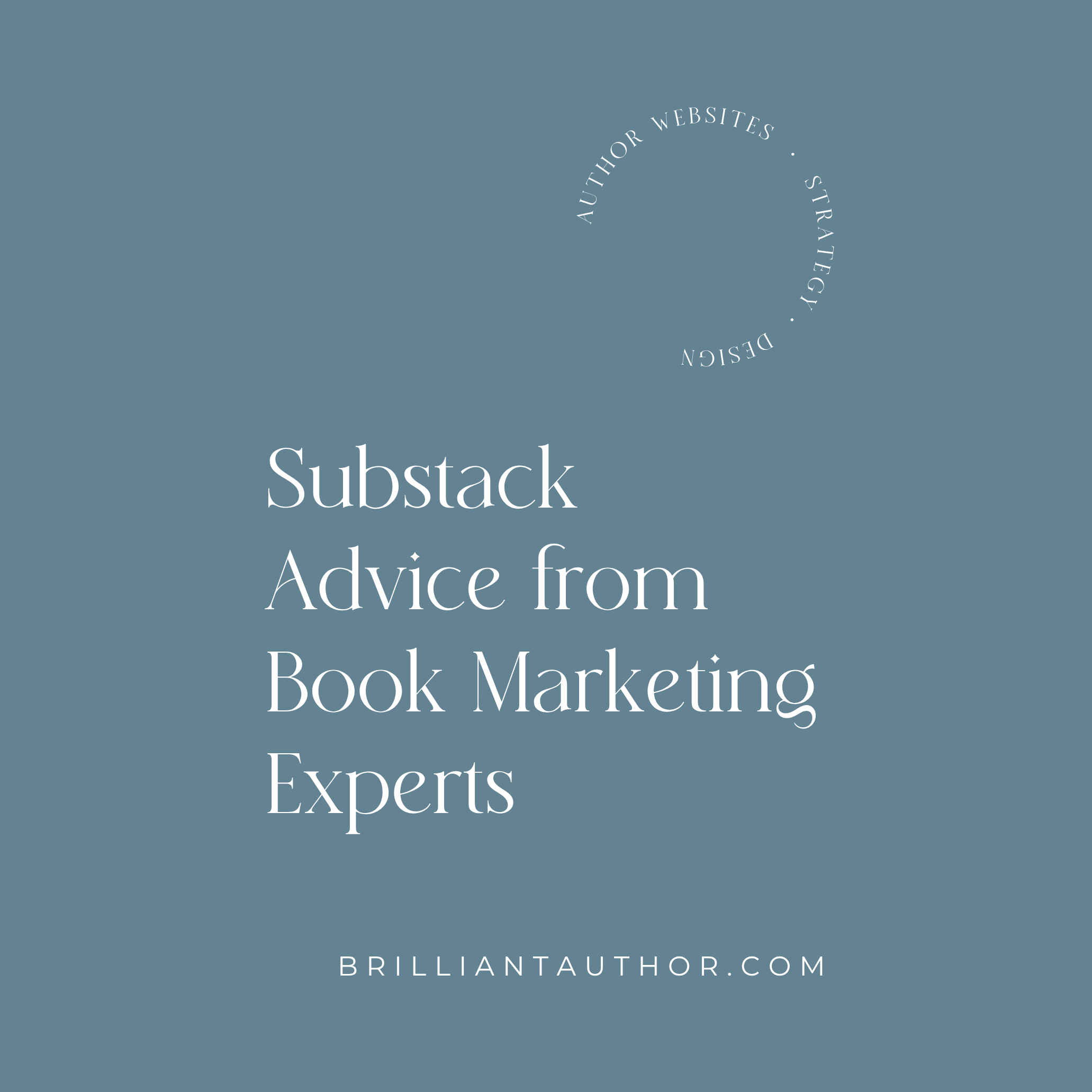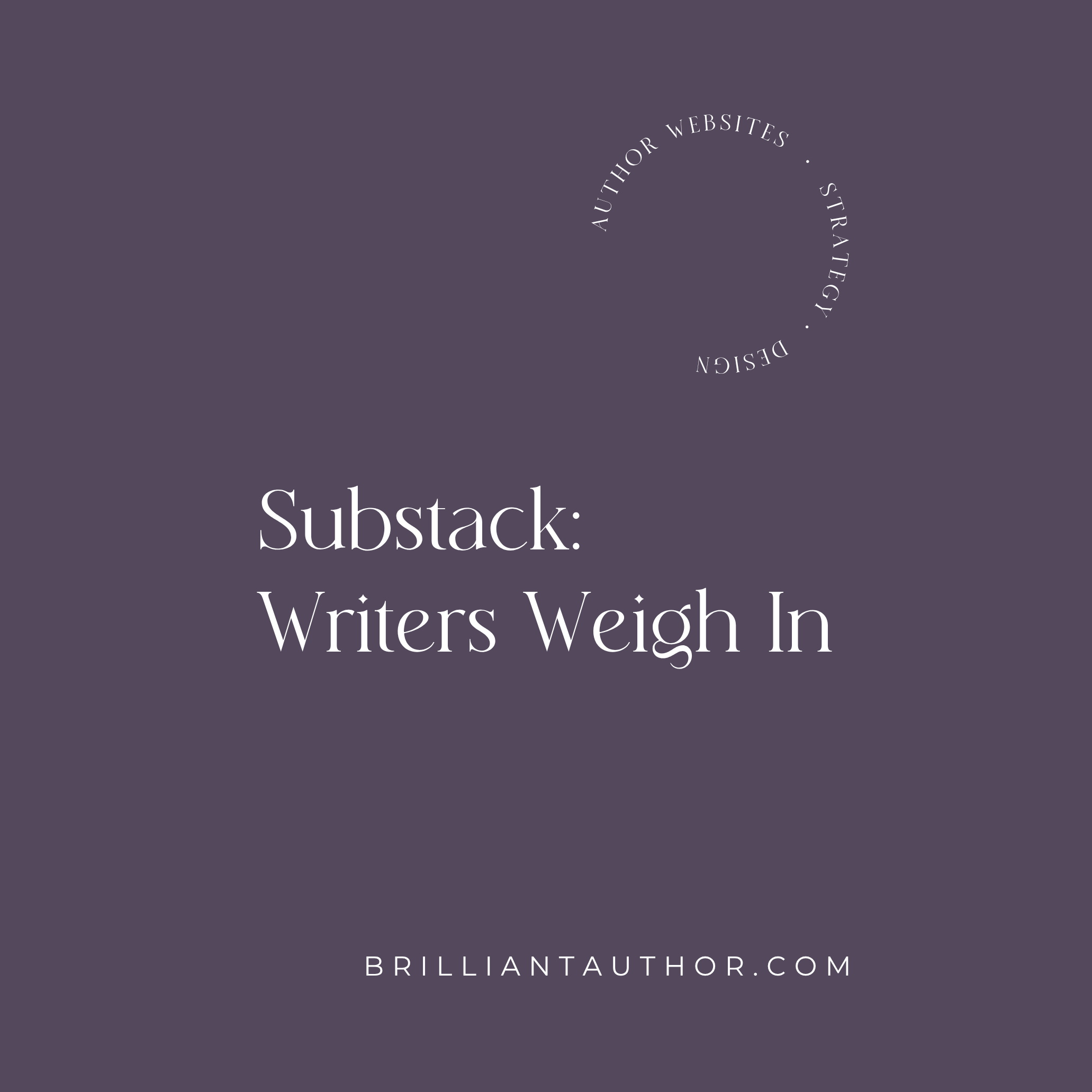Should You Use Substack For Your Author Newsletter?
Continuing this mini series on the theme of Substack, today I’m thrilled to welcome my friend Bev Feldman with a deep dive to help us understand the difference between Substack and other email marketing tools. Bev is both a savvy marketer and a thoroughly lovely person; she believes email marketing can be strategic, respectful, and human.
Bev has particular expertise in Kit (formerly ConvertKit) but this article will be useful for you if you’re weighing up any “traditional” email marketing tool against Substack.
I trust her guidance without question, so let’s read on!
Hello!
I’m Bev Feldman, an email automation strategist and Certified Kit Expert. I help business owners who never set out to be marketers build simple email systems that reflect your professionalism and values, and Pauline very graciously invited me here to share with you my answer to a question I’m very frequently asked:
“Should I use Kit (formerly ConvertKit) or Substack for my newsletter?”
It’s a fair question. After all, they’re both intended for sending emails, right?
Well, kind of.
From my experience, Substack vs Kit (or Mailchimp, or Mailerlite) isn’t actually the right question.
That’s like asking whether your blog should live on your Squarespace site or on Medium.
They overlap in purpose, but the approach is different: one gives you full control, while the other gives you access to a built-in audience (at the cost of that control).
So before we can actually address the great Substack vs. email marketing software debate, we need to back up and ask another question:
What do you mean by “newsletter”?
I look at newsletters as falling into three buckets:
Thought leadership - sharing essays, stories, or reflections to build your voice and ideas.
Updates and announcements - letting readers know what’s new, such as book signings or author events you’ll be attending
Marketing and selling - promoting your books (and offers and services if you have them) and reaching out to past customers.
How you answer that question - and what you need the software to do - impacts what platform is the better fit for what you need.
Because whereas email marketing software can do all three, Substack is really intended for the first.
How Substack works
Substack can be a great tool for thought leadership and discovery.
New readers might find you through recommendations and you engaging on the platform with other users. It’s part blog, part social network.
You can also offer paid subscriptions and “gate” some content for paying readers. (Some email marketing software, such as Kit, lets you do this too.)
But if you’re considering using Substack for more than just thought leadership, you need to be aware of its limitations. As outlined in in their Content Guidelines:
“Substack is intended for high quality editorial content, not conventional email marketing. We don’t permit publications whose primary purpose is to advertise external products or services, drive traffic to third party sites, distribute offers and promotions, enhance search engine optimization, or similar activities.”
So if your goal is to sell books, services, or digital products, Substack isn’t meant for that.
And here’s something else to consider: while you do have access to your subscribers and can export them to another software, you’re still renting space on someone else’s platform.
Readers might follow you there without ever really becoming your subscribers. Some even turn off email notifications, which means your words never actually land in their inbox.
Instead, they’d have to log into the Substack app or site to read it, where you’re also competing with not just other people’s content, but a feed of notes, direct messages, and other alerts.
How email marketing software (like Kit) differs
With email marketing, you show up where your readers are already spending a good chunk of their days: their inbox.
You also have a lot more technical capabilities, including:
Segmenting subscribers based on interests or behavior.
Personalizing content to specific readers.
Automating follow-ups and product delivery.
Customizing landing pages and forms to bring in new subscribers.
Readers receive your emails directly in their inbox, and when they reply, it’s a one-to-one conversation.
It’s less social and doesn’t have the discoverability feature that you’ll find on Substack, but you have way more control over who receives which content and when.
(And unless someone unsubscribes, your content will show up in people’s inboxes.)
Before deciding on whether to use Substack or an email marketing software, ask yourself:
Is your newsletter itself the product? If so, you might consider Substack (or beehiiv, which is basically like a cross between Substack and an email marketing software)
Or is your newsletter a tool to grow your business and sell more books? If so, then Kit or another email platform is better.
Do you want to be discovered by new readers? Substack wins this one hands down, but Kit does have some discoverability through their Creator Network.
Do you want to have control over which content people receive and ensure that it lands in subscribers’ inboxes? Then an email marketing software is the way to go.
Would you like to Automate with Heart?
Whatever you decide best meets your needs, I’d love to invite you to Automate with Heart, my cozy corner of the internet where I share insights on human-centered email marketing, written for people who never set out to be marketers.
Thank you so much, Bev, for sharing your expertise with us. I admit that until now, I was completely unaware of those Substack Content Guidelines.
Learn more about working with Bev, and/or schedule a chat here:
Other popular resources for communicating with your readers
Should you use Squarespace campaigns for your author newsletter?
How to embed your Substack feed in your Squarespace author website
How to embed your Substack sign up form on your Squarespace website
Save 10% off your first subscription for a Squarespace website by using the code PAULINE10
This article contains affiliate links. I only recommend products and services that I love, and I may earn a small commission if you purchase through one of my links. But you don’t pay any extra.









